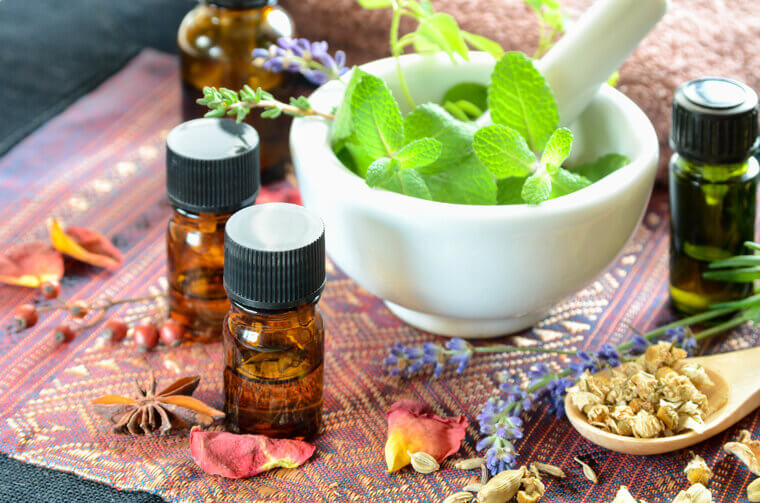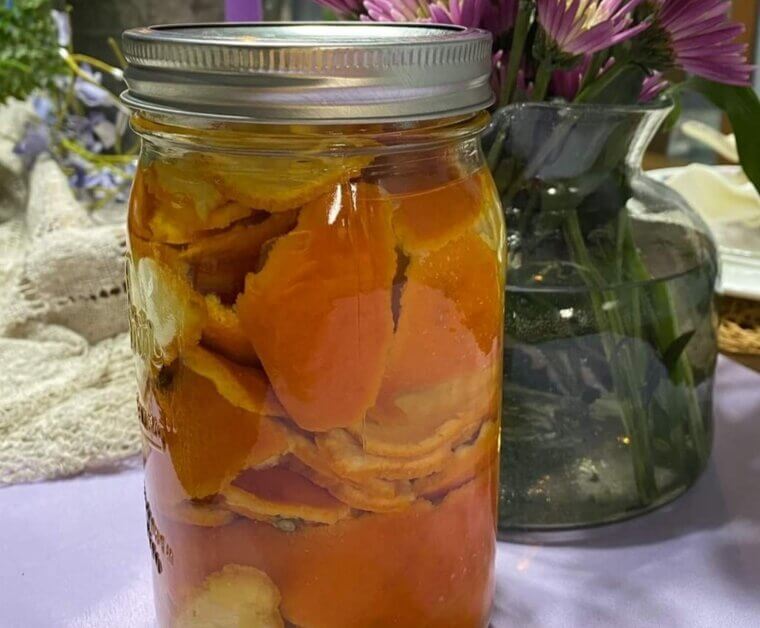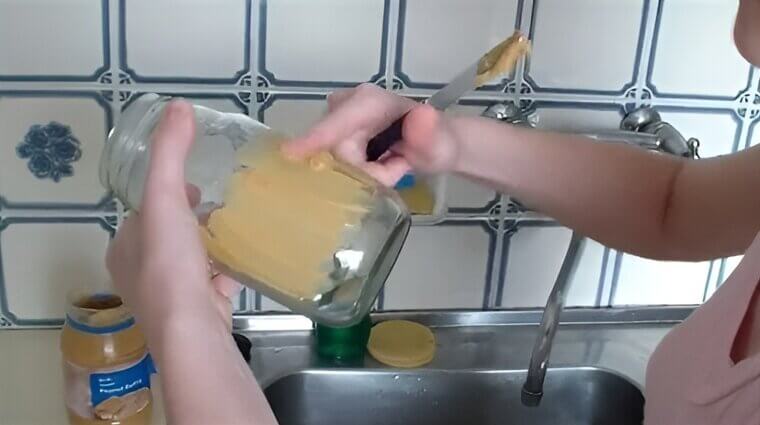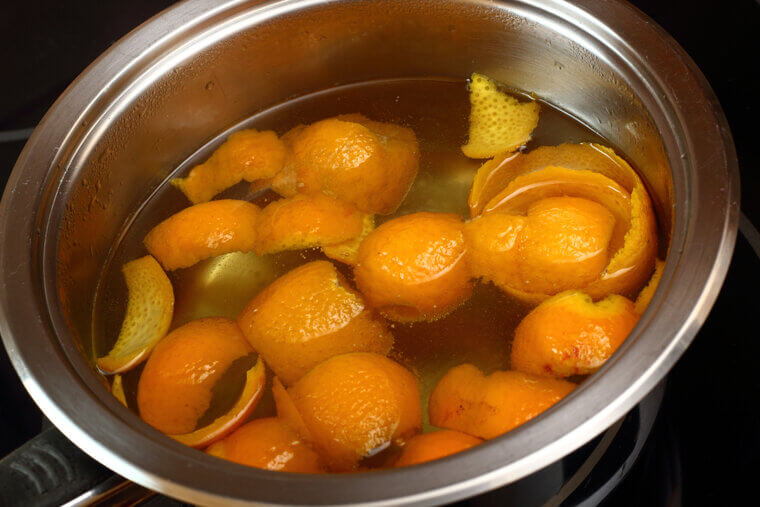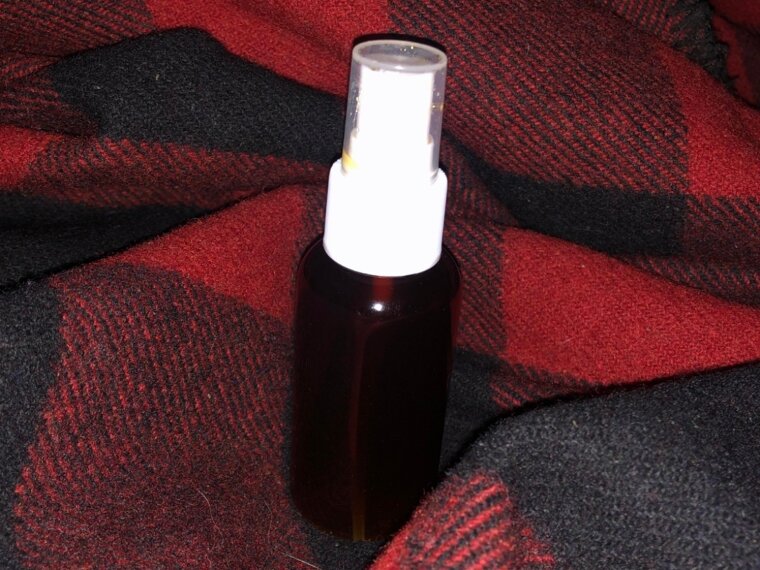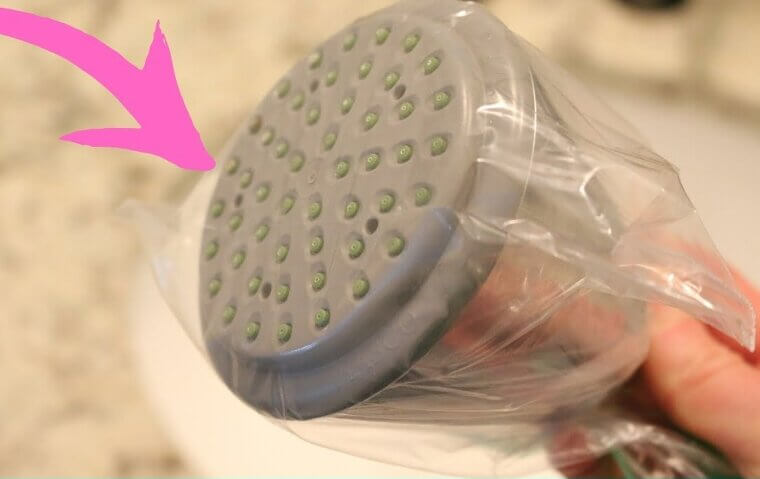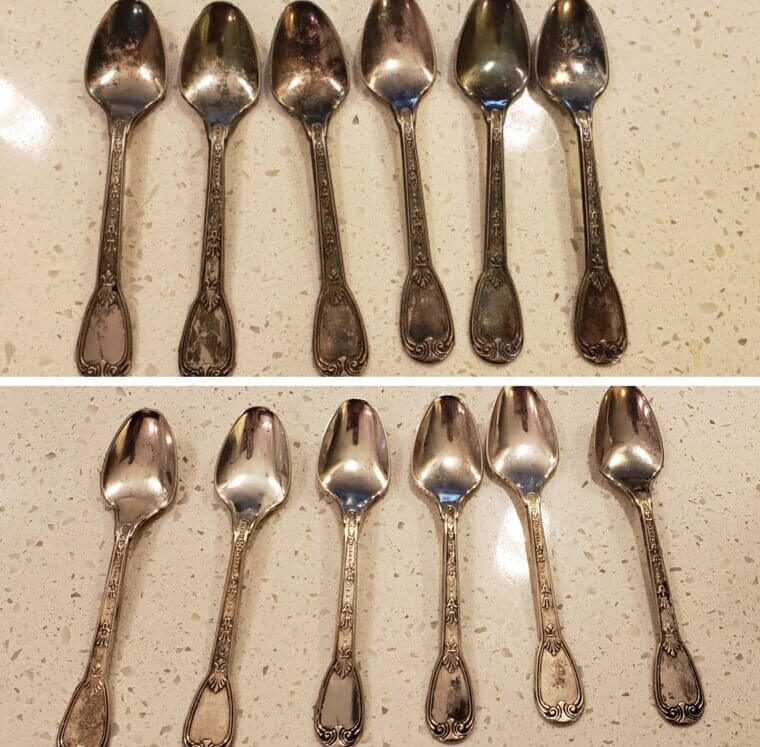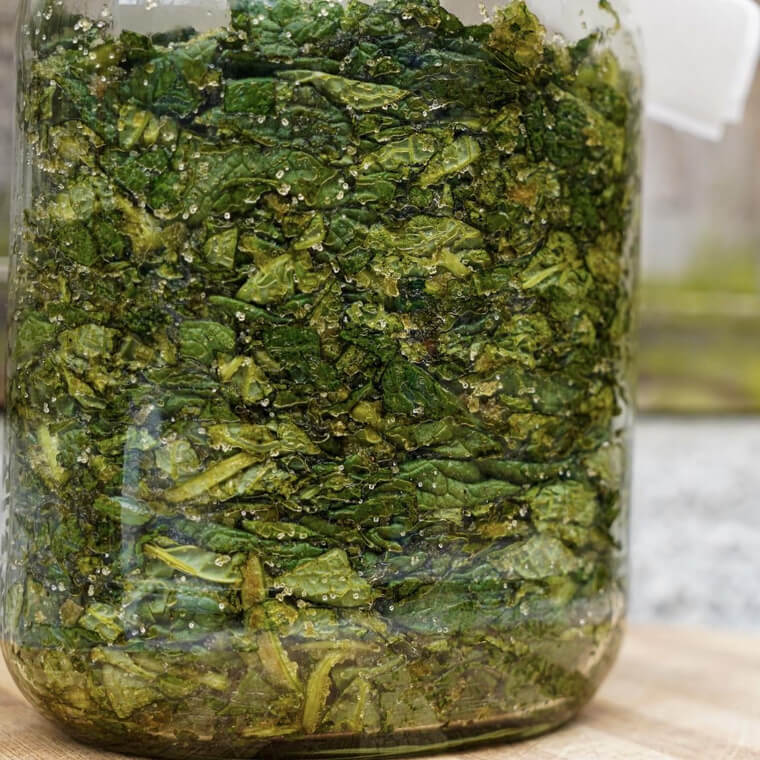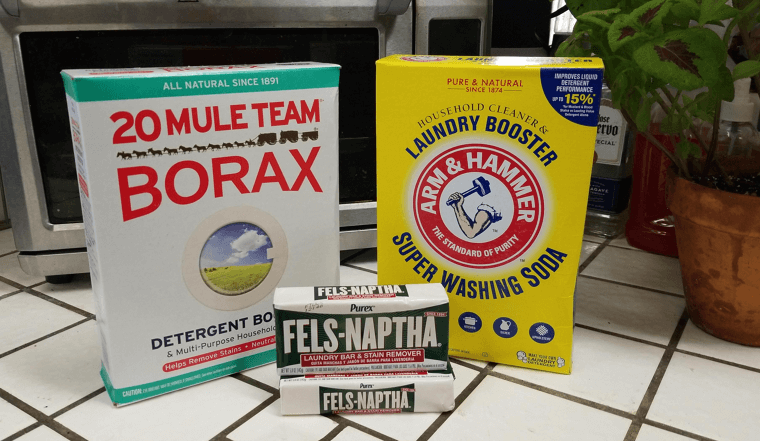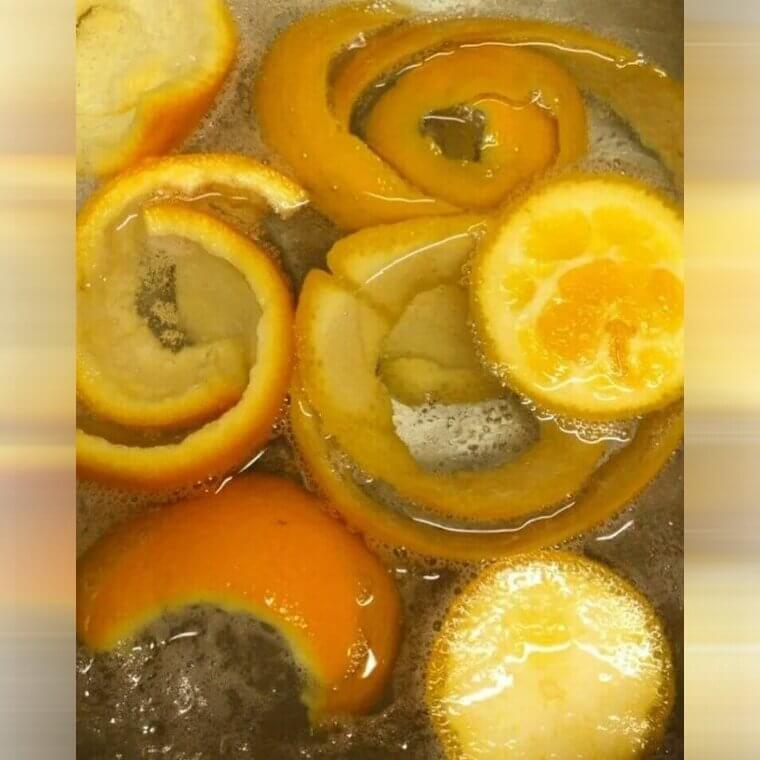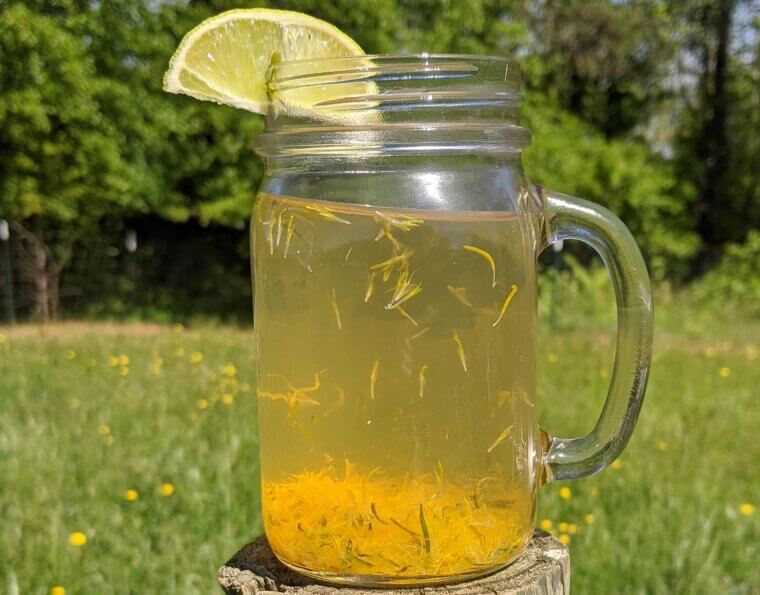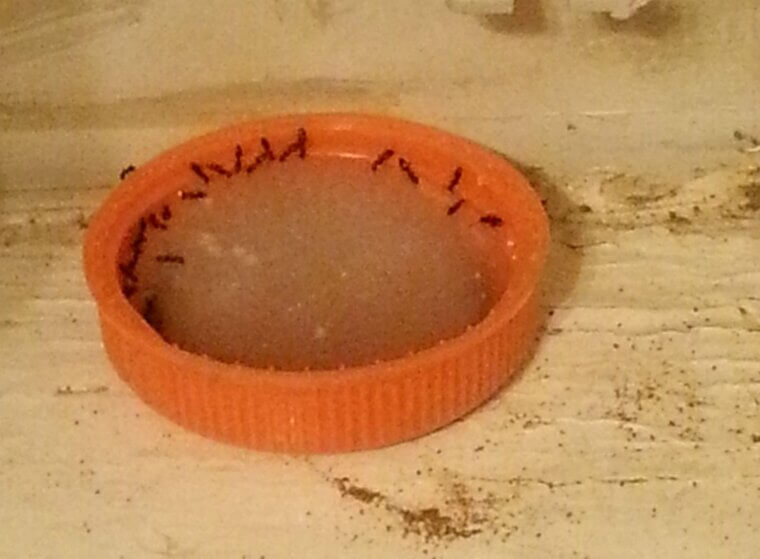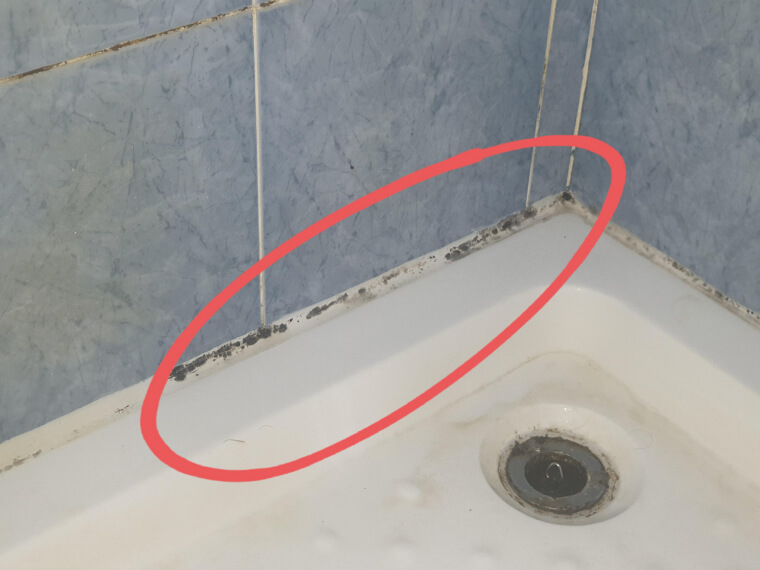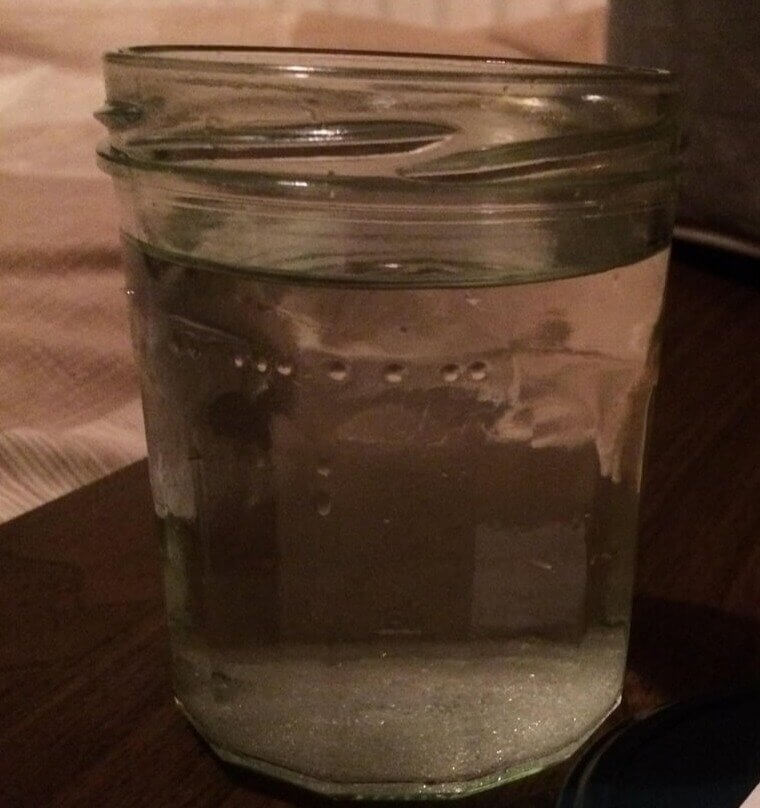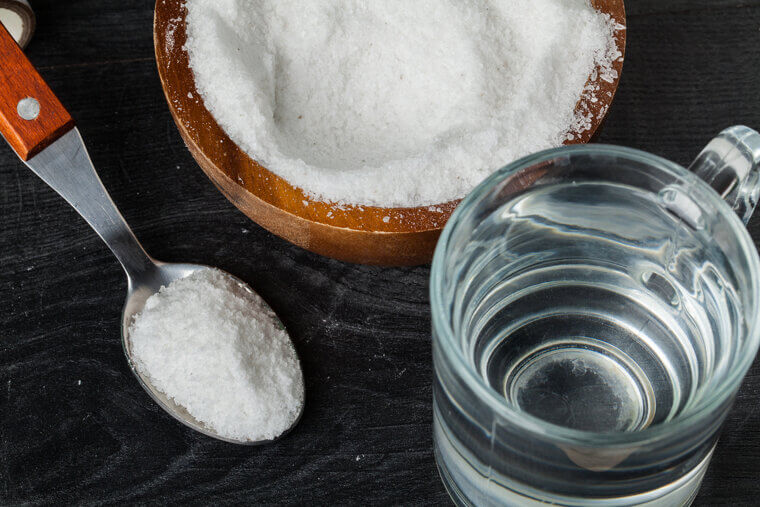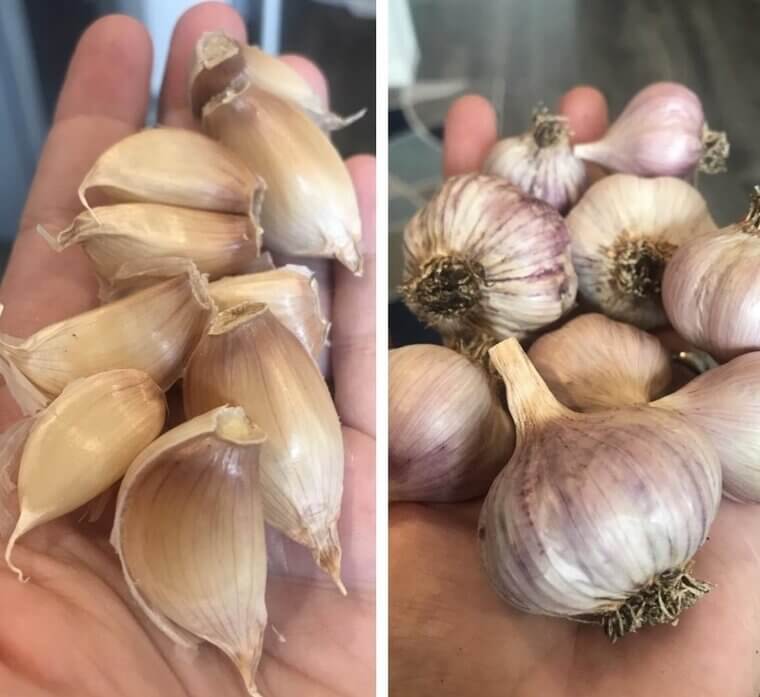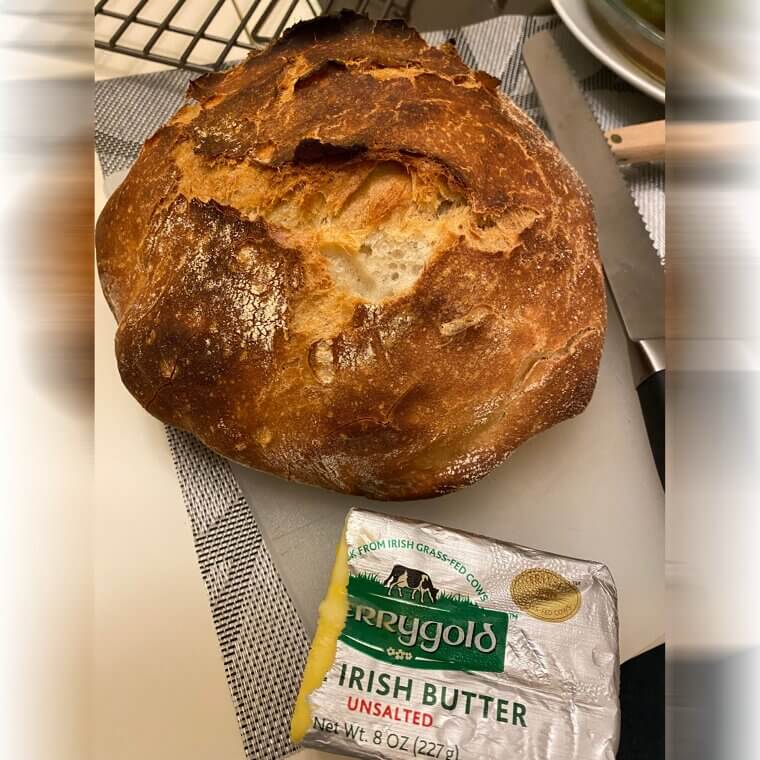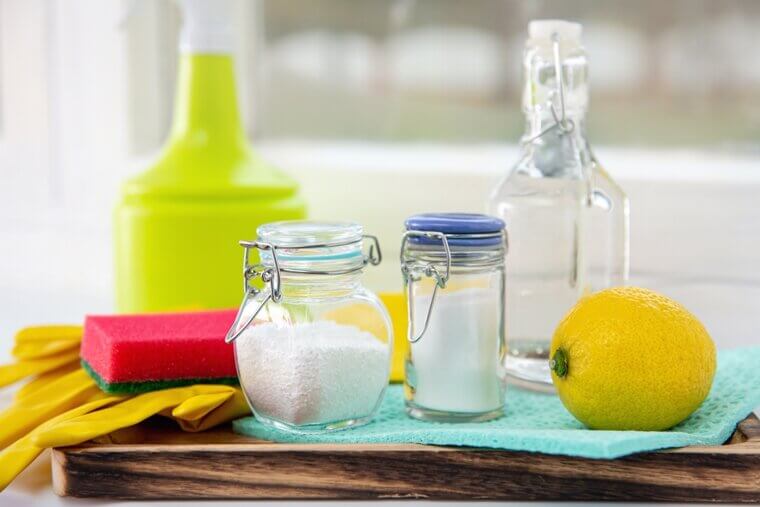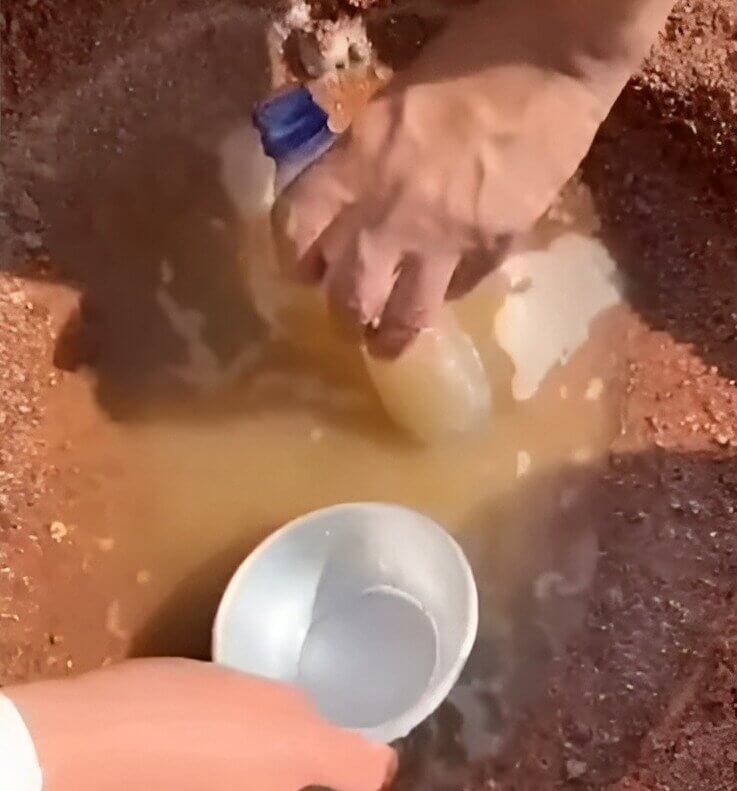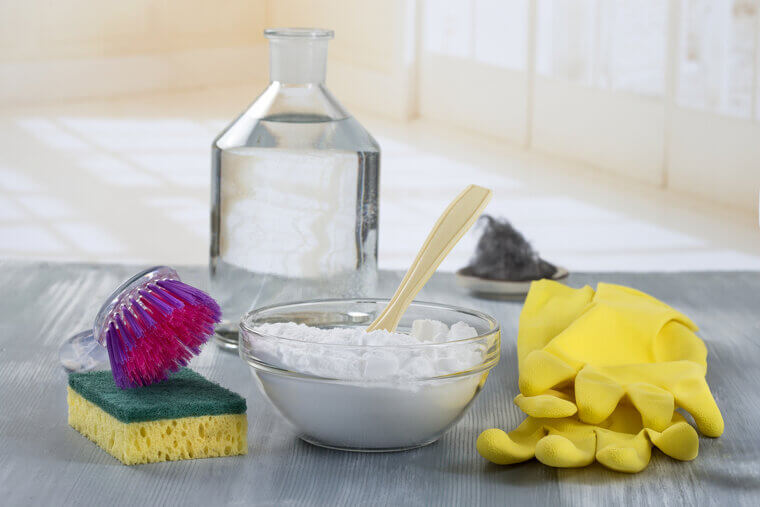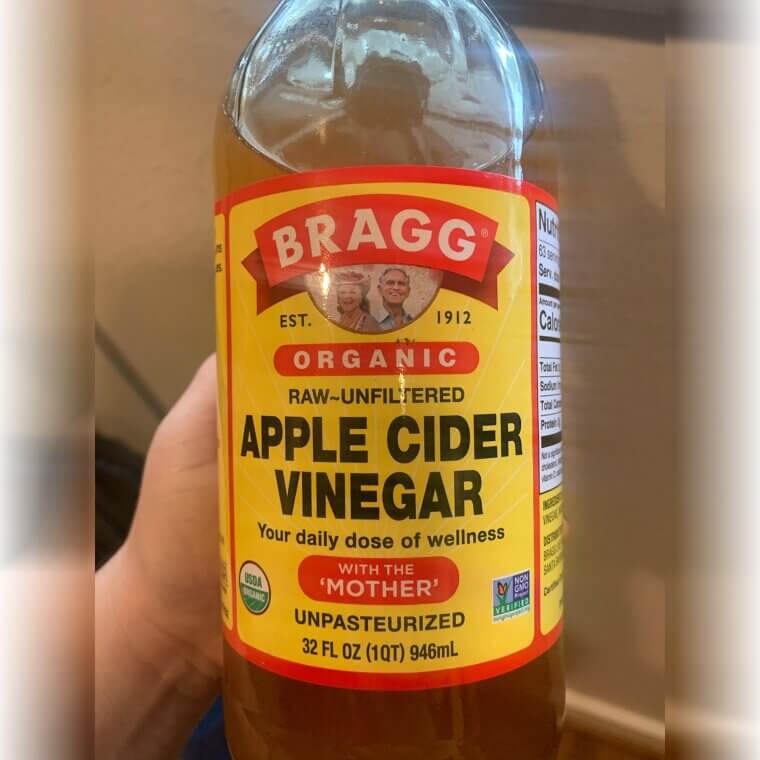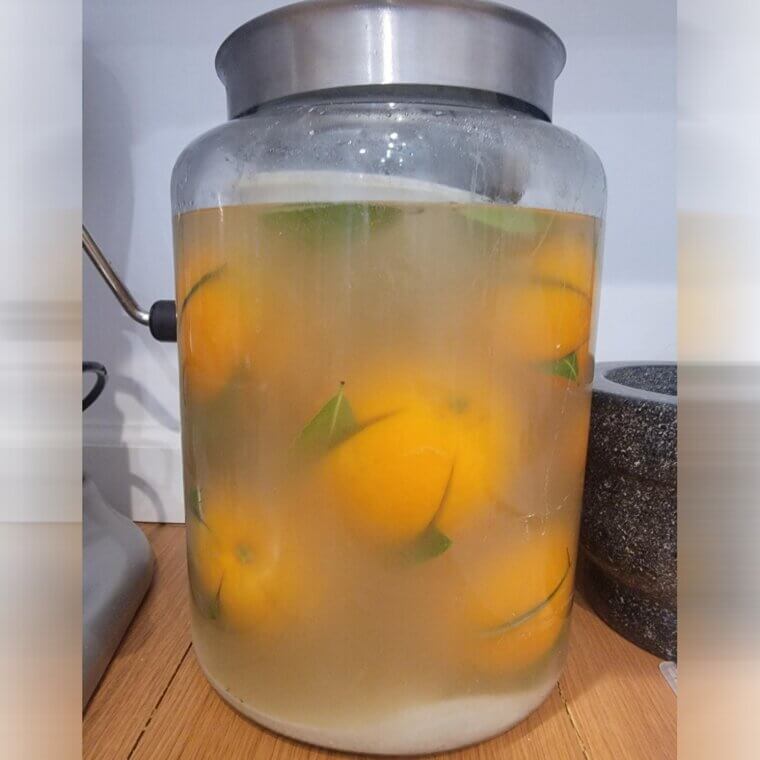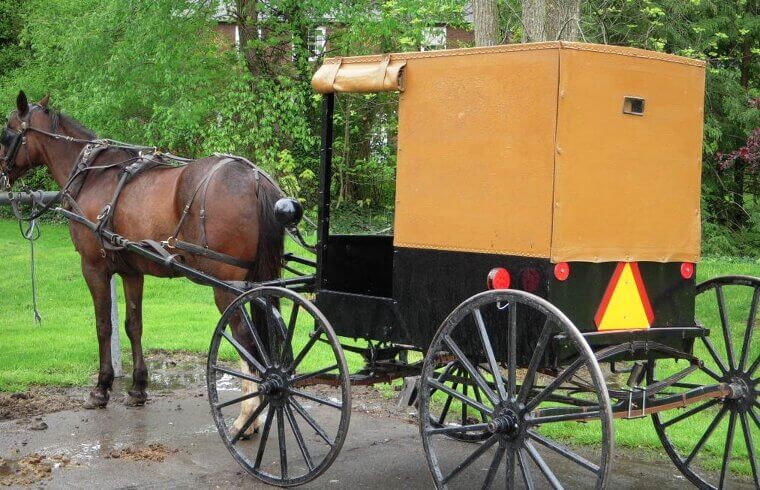DIY a Natural Mothball Alternative
Mothballs are frequently placed in closets to shield woolen objects from moths and plant fibers. However, store-bought mothballs contain chemicals and pesticides, which can be harmful to human health. The Amish, on the other hand, use natural ingredients to do the same thing without any negative side effects. They create small cotton balls and soak them in a concoction containing a blend of clove and cinnamon oils.
These cotton balls work well as mothballs after you let them absorb the oils. This natural solution reflects the Amish's dedication to simple, health-conscious living by protecting your woolen items and offering a safer, non-toxic substitute for store-bought mothballs.
Vinegar As Disinfectant
Vinegar is a great disinfectant that can be used on any hard surface to remove bacteria, grime, and odor. It's also not harmful to your health. Since the Amish have been using vinegar for so long, they have developed several techniques to make it more effective. To begin, boil one cup of water and one cup of vinegar. After that, add some orange peels, cover, and let it sit for a while.
Now, turn off the heat and let it sit overnight. Your natural disinfectant will be ready to use when you pour the mixture into a spray bottle first thing in the morning!
Peanut Butter As Sticker Residue Remover
Yes, you read that right! Peanut butter is frequently used by the Amish to get rid of sticky residue and stains. The method is straightforward: apply a generous amount of peanut butter to the surface's afflicted areas, then gently rub with a brush. Wait a few minutes for it to solidify, then rinse it off to observe the outcome! Peanut butter, which contains natural oils, is a good cleanser.
Its distinct consistency makes stain removal simple. Therefore, the next time you have some on hand, use extra peanut butter as a natural stain remover.
Citrus Solution To Deodorize Rooms
Even something as basic as a citrus solution can be used creatively, as the Amish have demonstrated. They utilize it to deodorize rooms, which makes the procedure of getting rid of smells both natural and reasonably priced. This technique is simple to do at home as well. First, heat a little water and white vinegar until they boil. After that, boil the mixture for a bit after adding some orange peels. Pour the solution into a bottle and leave it overnight until it's ready.
This enables the full infusion of citrus oils. The next day, you can start using your natural deodorizer. To get rid of offensive smells, spray it throughout your house. This approach is environmentally friendly and efficient.
Herbal Mosquito Repellent
Due to the chemicals they contain, most mosquito repellents on the market can be quite harmful to human health. As a result, when it comes to mosquito repellent, the Amish always favor natural substances. They use a variety of plants, such as clove, catnip, lavender, peppermint, citronella, lemongrass, and spearmint, to create their natural repellant. Put these herbs in a saucepan with boiling water to start. Let the mixture cool in the saucepan with a lid on. After it has cooled, strain the mixture to remove the solids.
You can use the remaining liquid as your natural insect repellent. The Amish's dedication to eco-friendly living is reflected in this technique, which not only successfully repels mosquitoes but also guarantees a safer option for you and your family.
Salt And Vinegar To Unclog Drains
A vinegar and salt combination is an efficient way to clean drains, and other communities have followed suit throughout the years after the Amish did. This mixture effectively clears obstinate obstructions without endangering the pipes. Combine one cup of white vinegar and one cup of salt to create this solution at home. To allow the solution to dissolve the blockage, pour the liquid into the drain, cover it, and let it for around 30 minutes.
To remove the particles, clean the drain with boiling water thereafter. This eco-friendly and effective natural cure reflects the Amish's dedication to non-toxic, workable alternatives for household upkeep.
Unclog Shower Head
Your bathroom shower head needs to be cleaned on a regular basis for best results. The showerhead's water-passing pores may become clogged due to mineral accumulation from the water supply, ultimately reducing its functionality. There is a quick and easy way for the Amish to unclog shower heads. Simply fill a plastic bag with white vinegar and wrap it tightly over the showerhead, making sure the showerhead is fully immersed in the vinegar. If you leave it overnight, the vinegar will dissolve the mineral deposits, and your showerhead will function normally again in the morning.
This eco-friendly and efficient natural cleaning technique demonstrates the Amish's dedication to adopting straightforward, non-toxic alternatives for routine home upkeep. Using this method on a regular basis will guarantee that your shower head stays in top shape.
Baking Soda To Revive Tarnished Silver
Silver items tarnish and lose their original shine over time. But instead of throwing them away, you can quickly restore their luster with this easy Amish tip. First, use a mild, non-abrasive soap to clean your silver cutlery carefully. This procedure helps remove any surface filth. Then, combine baking soda and warm water until the paste is thick enough to stick to the silver. After applying the mixture to the tarnished spots, let it sit for 15 to 20 minutes.
By acting as a mild abrasive, the baking soda removes the tarnish without causing any harm to the silver. Lastly, remove the solution with a damp cloth to expose the shine underneath. This approach demonstrates how successful conventional, natural cleaning methods can be.
Crochet Hook To Unclog Sink
As it restricts the flow of water, a clogged sink is a serious issue. The most common cause is usually food particles that have become stuck in the plumbing system underneath the sink. The next time you run into such problems, try this simple Amish method instead of calling a plumber. A crochet hook is all you need to unclog the sink. Correctly grasp the hook by holding it similarly to how you would cut vegetables with a knife. To remove any material that has accumulated in the pipe, insert the hook into the drain and move it around.
This easy-to-use method will keep your sink free-flowing while saving you time and money. The Amish take a pragmatic approach to resolving domestic issues, as evidenced by their inventiveness with commonplace objects.
Organic Fertilizer
The Amish are well known for producing organic fertilizer and for their proficiency in organic gardening. Since animal excrement has been shown to be extremely advantageous for soil health and plant growth, they have a long history of using it as the main component of their fertilizer. Animal excrement is also less expensive than commercial fertilizers, making it a cost-effective gardening option. The Amish use a variety of natural ingredients, including cottonseed meal, kelp, and seaweed, in addition to animal manure as fertilizer.
They also use kitchen scraps, such as potato skins, onion peels, and tomato tops, to turn wet waste into effective fertilizer. This all-encompassing strategy demonstrates their dedication to organic agriculture and guarantees that their agricultural methods are ecologically responsible and sustainable.
Milk To Polish Leather Accessories
Leather accessories are a popular way for people to express their sense of style. However, they ultimately lose their shine and require periodic polishing. The Amish have discovered an economical method of polishing their leathers themselves because the majority of leather conditioners available on the market are somewhat expensive. Their approach uses raw milk, which is a cost-effective and natural substitute. To polish leather, gently dab the surface with raw milk using a microfiber cloth.
The milk's proteins and fats nourish the leather, restoring its suppleness and sheen. Once the milk has been applied, let it sit for a bit and then gently rub it with a dry towel. You'll be astounded by the amazing outcomes this easy method may provide.
DIY Method To Clean Rugs
If you've ever believed that vacuuming isn't sufficient to completely clean rugs, you're not alone. The Amish have created a very successful do-it-yourself method for thoroughly cleaning rugs. First, make a homogenous mixture by mixing equal amounts of baking soda, cornstarch, and borax powder and adding some finely crushed bay leaves. After preparing the mixture, evenly distribute it over the carpet and allow it to sit for approximately three hours. The combination will absorb stains, smells, and grime throughout this time.
Once the mixture has dried, vacuum the rugs' surface completely to remove any remaining cleaning powder residue. This traditional cleaning procedure thoroughly cleans your rugs and offers a safe and efficient substitute for modern methods.
Food Preservation Methods
In the Amish culture, preserving food for subsequent seasons is a custom and a rather important need. They maintain the freshness of their meals using traditional methods instead of contemporary ones. For example, in order to keep food cold throughout the summer, they store it in a wooden ice house. Similarly, they preserve canned food by boiling it naturally for longer than three hours rather than using a pressure cooker.
Additionally, foods like sauerkraut are fermented at room temperature for roughly ten days. What a fantastic way to make foods last longer.
Orange Peels To Polish Wood Surfaces
Instead of throwing away orange peels, the Amish discover a variety of inventive uses for them. One prominent application is polishing and cleaning wood surfaces. D-limonene, a potent polishing chemical found in orange peels, works especially well on greasy and lifeless wood surfaces. It also serves as a barrier, protecting the wood from dust buildup.
In only a few minutes, the wood will be thoroughly polished and cleaned by rubbing the white side of the orange peels over it. This age-old method demonstrates the Amish's inventiveness and dedication to using natural remedies.
Dandelion Juice For Health
The medicinal benefits of dandelion have long been known. Dandelion juice is used mainly in Amish medicine to eliminate toxins from the blood. Rich in vitamins and minerals, it efficiently cleanses the blood, promoting internal wellness. It also seems to encourage the production of red blood cells, which lowers the risk of anemia. In addition, it helps with weight loss, inflammation reduction, liver function, immune system support, cholesterol regulation, and skin health.
For best effects, drink it on an empty stomach every morning. This is how the Amish maintain their health.
Natural Insecticides
It can be really annoying to see cockroaches and ants running about the kitchen floor. These pests spread illnesses in addition to contaminating surfaces. It may be detrimental to your health to use commercial insecticides to get rid of these insects. Thankfully, there is a simple Amish recipe for making your own insecticide. Just mix equal amounts of white sugar and borax, then sprinkle the mixture over the afflicted sections of your house.
Your bug problems should be swiftly resolved with this natural solution, which eliminates the health hazards connected to toxic pesticides. This method is an eco-friendly, safe, and efficient way to keep pests out of your house.
Preventing Bed Sheet Pilling
Pilling, which is a typical problem with many bed sheets over time, refers to the little fuzz balls created by the breakage of cotton fibers. These balls can irritate your skin. The Amish have easy ways to avoid pilling. First, when washing your bedding, treat it with gentle care. Do not use harsh detergents. Additionally, to lessen fiber wear, wash your linens less regularly.
By taking these precautions, you can preserve the comfort and quality of your bed linens and guarantee a better night's sleep.
Keeping Cookies Fresh
As previously said, the Amish have creative ways of preserving food, and cookies are no different. To preserve their crunchiness for a longer amount of time, simply store cookies in an airtight jar with a small piece of bread. This approach will ensure that the cookies remain crisp. Before putting the cookies away, make sure they are absolutely cool. Additionally, to keep flavors from blending, store different types of cookies in layers or individually.
Try to store cookies without frosting if at all feasible. This age-old technique guarantees that your cookies stay delectably fresh while showcasing the Amish's inventiveness in food preservation.
Vinegar In Cherry Desserts
Amish cookery has many unique aspects. One unusual custom is adding a dash of balsamic vinegar to pie and other cherry desserts. Some may find this odd, but it significantly improves the flavor. According to "The Amish Cook," vinegar's acidic properties give cherry sweets a hint of acidity, just like lemon juice does in other desserts. This method demonstrates the Amish's inventiveness in the kitchen and their capacity to improve classic recipes using basic yet potent components.
The best part about this is that it's adding some health to desserts so there's no guilt involved!
Natural Pesticides
The Amish, who support organic farming, don't use chemical pesticides on their crops. Rather, they use a straightforward yet efficient solution of boiling water and brown sugar to get rid of bugs without damaging the plants. This all-natural remedy improves plant health in addition to getting rid of pests. To further enhance nutrient uptake and discourage pests, some Amish communities also apply salt spray at the base of plants. Another natural pesticide they employ is eucalyptus oil, which must be used nearly every day to be effective.
These techniques demonstrate the Amish dedication to environmentally responsible and sustainable agricultural methods, guaranteeing strong and healthy crops while preserving balance with the natural world.
Strategic Garden Planting
When establishing their gardens, the Amish choose their plants carefully and strategically, making plans in advance. To provide the plants with more air circulation, they cultivate vegetable crops vertically. They also grow some companion plants, such as marigolds, alongside their vegetable harvests. Marigolds are a natural and practical remedy because they are proven to lower the risk of pests. The Amish plan their garden layout in advance and use "companion planting."
This approach encourages robust plant development and demonstrates their dedication to effective, environmentally friendly gardening techniques.
DIY Method To Remove Mildew
Even though there are a lot of dangerous mildew cleansers on the market, health-conscious people will value this easy do-it-yourself Amish method. Start by mixing half a cup of borax powder, a tiny bit of thyme essential oil, and three-quarters of a cup of hot water. When the mixture is prepared, apply it to the affected areas with a brush to effectively remove stubborn stains.
This method offers a natural, non-toxic remedy for mildew that produces excellent results while also making the home safer and healthier. This technique is a perfect example of the Amish's dedication to using safe and efficient cleaning products.
Removing Grease Stains
It's not unusual to see oil stains on clothing these days. Nevertheless, detergents are not a good idea for getting rid of those stains because they may eventually cause the clothes to become dull and lose their color. For this issue, the Amish have also created a do-it-yourself solution that is unquestionably worthwhile. First, add one teaspoon of salt to two cups of hot, unflavored water. Cover the mixture tightly and allow it to cool when it reaches a boil.
Now, use this mixture to scrub the sections of your clothing that are discolored. For even better results, you can also add cornstarch, baking soda, or vinegar.
Natural Stove Top Cleaner
The most popular stove top cleaner in the Amish community is a mixture of vinegar and baking soda. Additionally, they use a solution made of table salt, baking soda, and warm water to clean their stove tops. For enhanced results, you can add some lemon juice to the mix. To use any of these remedies, simply apply the mixture to the stovetop and scrub gently. This natural cleaning method will only take a few minutes to effectively clean the area.
The combination of these ingredients ensures a powerful yet eco-friendly way to maintain a spotless and shiny stovetop.
Garlic To Relieve Digestive Issues
Despite being a vegetable by nature, garlic is one of the most often used herbs in Amish cooking. The Amish utilize it to treat and prevent digestive problems in addition to adding it to different foods to enhance their flavors. Garlic, which is high in antibiotics, helps your digestive system rid itself of pollutants. Long-term, this helps prevent stomach problems. Chew a clove of garlic every morning on an empty stomach for optimal benefits.
In addition to aiding in digestion, it will strengthen the immune system, control blood pressure, and prevent heart disease.
Using Butter When Baking Bread
The Amish are well known throughout the world for their delectable "friendship bread." The addition of butter is one of the things that makes this bread special. Before baking the bread in the oven, they liberally coat the top with melted butter. This technique produces a delicious and aesthetically pleasing crust that is soft, crunchy, and golden. It is advised to substitute herb butter for ordinary butter for a more pronounced flavor.
This straightforward but efficient method demonstrates the Amish's culinary prowess and their capacity to produce mouthwatering baked items.
Borax Solution As An All-Purpose Cleaner
For the Amish, a borax solution is used as an all-purpose cleaning agent. It is well-known for its ease of use and efficiency. Because of its alkaline qualities, borax efficiently eliminates acidic stains while leaving surfaces glossy. To manufacture this solution at home, mix equal parts borax and hot water in a stainless-steel container until well combined. Using a brush or a damp towel, apply the solution to the afflicted regions.
Repeat the procedure frequently for the best cleaning effects, keeping your home shining and clean. This age-old technique provides an eco-friendly and natural substitute for industrial cleaning.
Natural Water Purifier
The Amish believe that rainwater is the safest source of drinking water, and they may not be wrong about that. After collecting rainwater in a reservoir, they use an oak barrel to create a natural purifier. The bottom of this purifier has tiny stones, followed by layers of sand, charcoal, and bigger stones. The water passes through these different levels, undergoing a natural filtration process that successfully eliminates contaminants.
When the water reaches the top, it is considered fit for human consumption. This age-old technique demonstrates the Amish's ingenuity and dedication to sustainable, natural living.
Vinegar And Baking Soda Solution
Baking soda and vinegar are used for many purposes in the Amish way of life. The Amish use a combination of these two natural materials instead of toxic cleaning products. This mixture can clean pots, plates, kitchen sinks, washing machines, and other household objects. This multipurpose product can also deodorize indoor areas, clean clothes, unclog drains, and treat dull hair. Due to its efficacy and safety, this natural cure is a mainstay in Amish homes.
To get the best results, it's crucial to make the solution with equal parts vinegar and baking soda. This method supports a healthier home environment and is consistent with the Amish values of eco-friendliness and simplicity.
Growing Your Own Food
The Amish strictly follow the "grow your own food" principle. Most Amish homes have a garden space where they grow a range of crops. This approach allows them to eat fresher, better-quality fruits and vegetables, and it saves money. In addition to gardening, the Amish raise their own animals, demonstrating their commitment to self-sufficiency. Raising animals contributes to their total food security, guaranteeing a consistent supply of meat, dairy, and eggs.
The Amish foster a strong sense of community and shared responsibility by making the most of their resources and helping one another out on the farm. Their wholesome eating habits, which focus on natural and homegrown foods, surely greatly influence their general fitness and well-being.
Cooking Over Fire
The Amish do not live by spending money on cooking gas, and they don't have any electricity either. Instead, they favor using iron wood-burning stoves to cook naturally over a fire. This method gives the food a wonderful flavor while also saving a significant amount of money. The Amish usually place the stove in the middle of the house to ensure that every part of the house has enough heat.
Amish families frequently congregate in the evenings around the roaring stove during the bitterly cold months to enjoy the warmth and one another's company, while cooking their homemade and natural food over the fire.
DIY Cold Remedies
As previously said, the Amish rely on natural remedies to combat illnesses rather than modern medications for common problems. They treat ailments like a cold or sore throat with something as basic as lukewarm salt water. To use the cure, simply dissolve one teaspoon of salt in eight ounces of lukewarm water and gargle with it three times a day, every day. In a similar vein, some Amish people treat sore throats by dissolving ginger root in boiling water.
Remedies, including soup, echinacea, garlic, and honey, are also frequently used to heal minor ailments in Amish villages.
DIY Remedies For Sore Muscles
Around the world, muscle soreness is a relatively prevalent problem, particularly for people who frequently perform strenuous workouts. Fortunately, the Amish have discovered a number of solutions to address this. Use one of the following solutions the next time you have a sore muscle. An excellent remedy for sore muscles is apple cider vinegar. It can be regularly taken on an empty stomach or applied to the afflicted areas.
Additionally, applying essential oils topically—like peppermint, lemongrass, or thyme—is a fantastic way to address the issue. Watermelon juice, cherry juice, Epsom salts, and more are on the list.
DIY Skin Remedies
Amish ladies are renowned for having perfect, radiant skin. Their DIY skin care products, of which apple cider vinegar is a key component, are the key to their unparalleled beauty. Rich in vitamins, minerals, and enzymes, apple cider vinegar helps repair sunburns, calm skin, minimize acne, and bring back the skin's natural tone. Usually, the treatment can be used three or four times per week. To get rid of dark spots, scars, pigmentation, etc., they also apply a citrus solution to their skin in addition to apple cider vinegar.
Aloe vera gel is another popular skin care product among Amish people. Other items on the list include coconut oil, charcoal, and cherry paste.
Pineapple Juice For Cough Relief
In the Amish community, pineapple juice is frequently used to treat cough symptoms. It contains bromelain, a class of enzymes with anti-inflammatory qualities that aid in the breakdown of mucus. Vitamin C, beta carotene, zinc, copper, folate, manganese, fiber, and other minerals that help prevent coughing are also abundant in pineapple juice. For optimal results, combine one cup of pineapple juice, one teaspoon of honey, and a pinch each of salt and pepper.
To experience the calming effects of this concoction, drink it three or four times a day for a few days. This natural cure demonstrates the Amish's inclination for straightforward, efficient, and all-encompassing approaches to health.
Horse And Buggy For Transportation
The Amish travel using the "horse and buggy," an outdated form of transportation. They always opt for this option, whether they are going to church, driving long distances with heavy suitcases, or just enjoying the neighborhood. The explanations are straightforward: it is simple, cost-effective, time-efficient, and ecologically friendly. Buggies are a typical sight in Amish villages, as they are found in the majority of their homes.
Even now, the "horse and buggy" has come to symbolize the Amish way of life and their dedication to tradition and simplicity. Some Amish people also ride in pony carts, horse-drawn carriages, and other vehicles. This behavior demonstrates their inclination for a slower, more connected lifestyle.

